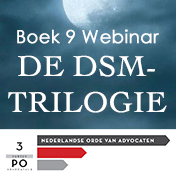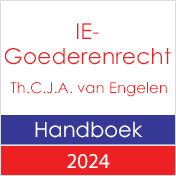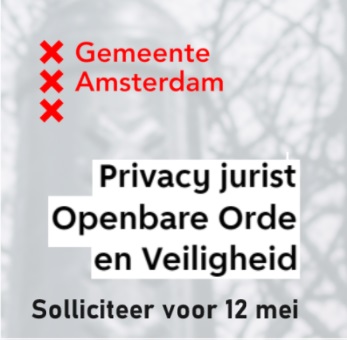
Merkenrecht. Beroep tegen de afgewezen nietigheidsprocedure tegen een driedimensionaal merk van Nestlé voor waren uit de klasse 30, namelijk snoep, cake, wafels, koekjes en bakkerijproducten.
Het beroep slaagt. Verzoeker stelt zich op 4 grieven. Als eerste stelt Mondelez dat de Kamer van Beroep onjuist heeft geoordeeld aangaande het onderscheidend vermogen dat het litigieuze merk heeft verkregen door gebruik. Het Gerecht is met Mondelez van oordeel dat het merk niet is gebruikt voor alle waren waarvoor het merk is ingeschreven. Het is onvoldoende gemotiveerd hoe het merk is gebruikt voor bakkersproducten, cake en wafels, ook niet als deze gerelateerd zijn aan de andere waren waarvoor het merk is ingeschreven. Mondelez stelt voorts dat er überhaupt geen sprake is van gebruik van het merk dat is geregistreerd. Hierover stelt verzoeker dat er geen sprake is van gebruik als merk, omdat de vorm niet de functie draagt de herkomst van het product aan te duiden: dit doet het woordmerk KITKAT namelijk. Hierin gaat het Gerecht niet mee. Een vorm kan wel dienen als merk wanneer het in combinatie met een woordelement de herkomst van het product duidt, ook al draagt deze vorm dat woordelement zelf niet.
Vervolgens stelt Mondelez dat het litigieuze merk niet voldoende gebruikt is als herkomstduiding. Ook hierin gaat het Gerecht niet mee. In 2015 bepaalde het Hof dat herkenning of associatie niet genoeg is om onderscheidend vermogen bij een merk vast te stellen. Er moet sprake zijn van een exclusieve herkomstduiding van de onderneming waar het goed vandaan komt. Het Gerecht stelt hierover echter dat het mogelijk moet zijn voor het merk het mogelijk moet zijn het product zonder verwarring te identificeren, ook met behulp van eventuele gerelateerde woordmerken. Daarop afgaande stelt het Gerecht dat het voldoende is dat mensen het product met KIT KAT associëren. Een vormmerk kan onderscheidend vermogen verkrijgen door de manier waarop het tijdens aanprijzingen wordt gebruikt, het hoeft niet per se zichtbaar te zijn ten tijde van de verkoop, zoals bij het litigieuze merk het geval is.
Mondelez stelt dat er onvoldoende bewijs is dat het merk onderscheidend vermogen heeft in de gehele EU. Hierin gaat het Gerecht mee. Verweerder heeft slechts voor 11 van de 15 relevante lidstaten bewijs gegeven dat voor het onderscheidend vermogen spreekt. Het onderscheidend vermogen moet echter over de gehele unie bezien worden, en zodoende slaag dit middel. De zaak wordt terugverwezen naar het EUIPO.
98 EUIPO and the intervener indicated that the Court had simply confirmed the well-established principle resulting from the earlier case-law stemming from, inter alia, the judgments of 12 February 2004, Koninklijke KPN Nederland (C‑363/99, EU:C:2004:86); of 7 July 2005, Nestlé (C‑353/03, EU:C:2005:432); and of 19 June 2014, Oberbank and Others (C‑217/13 and C‑218/13, EU:C:2014:2012), according to which it must be established that, as a result of the use of the mark in question, either as part of another registered trade mark or in conjunction with that trade mark, the relevant class of persons perceives the product or service, designated exclusively by the mark in question, irrespective of any other mark that may also be present, as originating from a particular undertaking.
99 In that regard, it must be emphasised that the fact that the relevant public has recognised the contested trade mark by referring to another mark which designates the same goods and is used in conjunction with the contested trade mark does not mean that the contested trade mark is not used as a means of identification in itself. The position would be different if the Court of Justice had found that, as suggested by the English referring court, the answer to the first question referred for a preliminary ruling in the judgment of 16 September 2015, Société des Produits Nestlé (C‑215/14, EU:C:2015:604), was that, in order to establish that distinctive character has been acquired, it is necessary to demonstrate that the consumer concerned relies on a mark in order to identify the commercial origin of the goods designated by that mark. However, the Court merely confirmed that, to that end, it was necessary to show whether the mark representing the shape of the product, when used independently of its packaging or of any reference to the word mark KIT KAT, serves to identify the product in question as being, without any possibility of confusion, the product known as ‘Kit Kat 4 fingers’, as was observed in point 52 of Advocate General Wathelet’s Opinion in Société des Produits Nestlé (C‑215/14, EU:C:2015:395).
100 Indeed, having emphasised that acquisition of distinctive character could be as a result of use both as part of a registered trade mark or a component thereof and of a separate mark in conjunction with a registered trade mark, the Court held that, in consequence of such use, the relevant class of persons had to actually perceive the product or service, designated exclusively by the mark applied for, as originating from a particular undertaking. It concluded that, regardless of whether the sign was used as part of a registered trade mark or in conjunction with the registered trade mark, the fundamental condition was that, as a consequence of that use, the sign for which registration as a trade mark was sought could serve to identify, in the minds of the relevant class of persons, the goods to which it related as originating from a particular undertaking (judgment of 16 September 2015, Société des Produits Nestlé, C‑215/14, EU:C:2015:604, paragraphs 64 and 65).
Lees het arrest hier.



























































